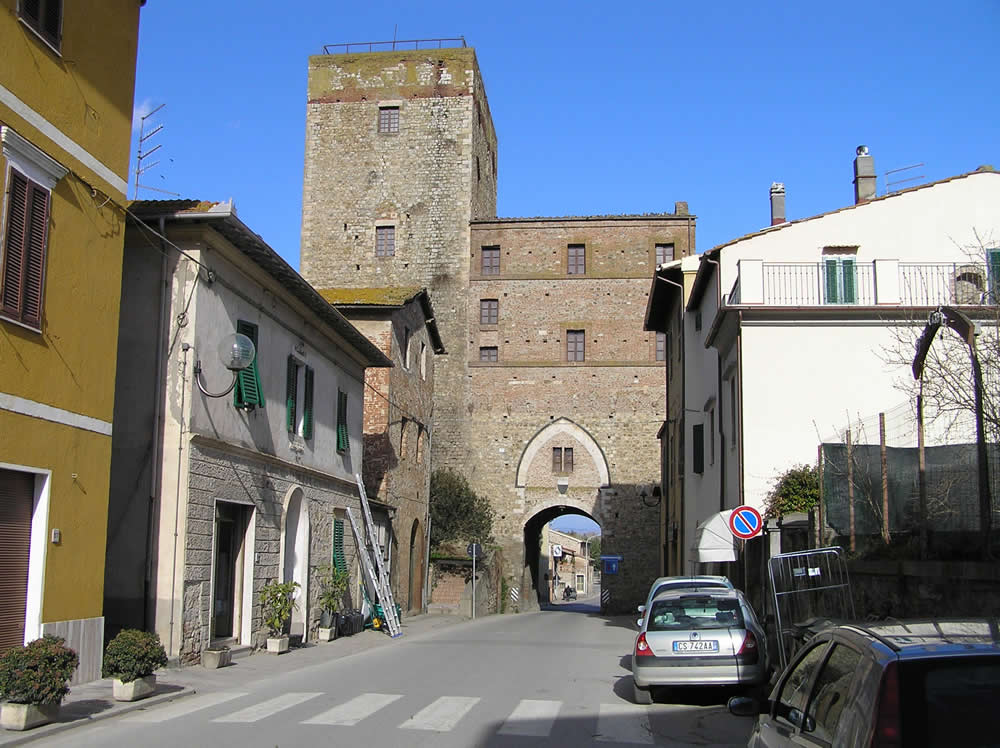Questo articolo è disponibile anche in:
![]() Italiano
Italiano
A few kilometers from Grosseto is the medieval village of Paganico, located along the Ombrone plain at 63 meters above sea level. In the Middle Ages Paganico was a small center under the control of the Aldobrandeschi, which in the XIII century became part of the possessions of the Republic of Siena.
Siena decided in 1262 to erect it as a “free village”, hence the original name of Castelfranco di Paganico, and in the following years surrounded it by mighty walls with a rectangular plan, making it the most important fortified outpost along the southern borders of the republic. The village of Paganico in 1303 became the seat of a vicariate of the Republic of Siena. In 1328 Castruccio Castracani occupied Paganico whose fortifications had not yet been completed by the Republic of Siena, this event convinced Siena of the need to finish the work on the fortifications and between 1334 and 1335 its walls were renewed and completed.
THE ADMINISTRATIVE CENTER OF MAREMMA SENESE
Between the 13th and 14th centuries Paganico became the administrative center of the Maremma Senese, an important market took place there and it was a place of collection of duties. Due to its border position and its importance, Paganico was often subjected to sieges throughout the 14th century.
Paganico currently maintains a part of its medieval walls, with a rectangular plan, with several towers and on which three gates still open: towards Grosseto there is the Porta Grossetana or Porta Franca, towards Siena it is the Porta Senese with the Cassero Senese transformed into a palace in the 17th century, while to the west is the Porta Gorella. The most impressive is the Porta Senese or Cassero Senese dominated by a high tower.
The town center still has some medieval buildings with arches and porticoes and a parish church, the late Gothic church of San Michele with a single nave built between 1296 and 1305 with 14th-century frescoes inside. The Palazzo Pretorio is a building dating back to the 14th century while the Palazzo del Vecchio Ospedale was built in the 13th century.
Questo articolo è disponibile anche in:
![]() Italiano
Italiano

